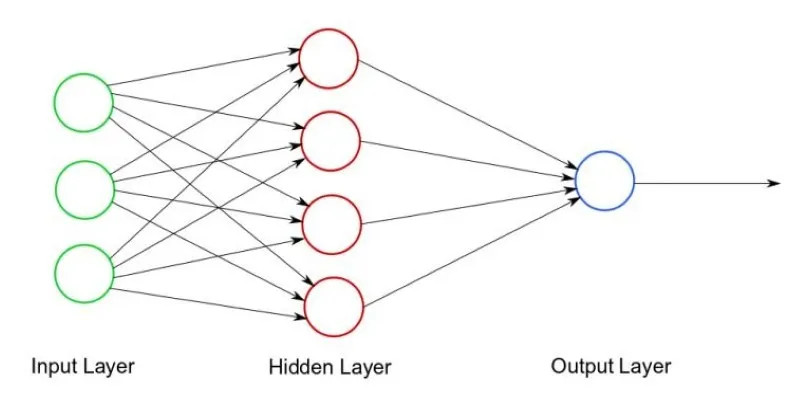Machines excel at identifying patterns, but what happens when something doesn’t fit? That’s where anomaly detection plays a crucial role. Anomaly detection is the process of identifying rare, unusual, or suspicious data points that deviate from expected trends. From spotting fraud in banking to predicting system failures in factories, anomaly detection helps businesses address problems before they escalate.
Unlike traditional rule-based detection, machine learning enables the discovery of hidden anomalies in massive datasets with high accuracy. Whether it’s a cyberattack, a medical diagnosis, or a faulty machine, early anomaly detection can make the difference between prevention and disaster.
The Role of Anomaly Detection
In most real-life applications, anomalies are significant concerns that require resolution. For example, in financial services, an anomaly may indicate financial fraud, while in medicine, a peculiar pattern within medical data can suggest a newly emerging, obscure disease. Accurate and prompt anomaly detection is thus critical for timely and effective decision-making and intervention.
Machine learning is indispensable in detecting anomalies, especially given the increasing complexity and volume of data. Manual outlier detection is time- consuming and prone to human error. In contrast, machine learning algorithms can detect anomalies more effectively, often identifying patterns that are extremely difficult to locate manually.
By detecting anomalies, companies and organizations can respond to potential problems sooner and more precisely. This proactive approach is particularly beneficial in sectors such as cybersecurity, medical care, and finance, where anomalies often indicate risks or opportunities that require urgent attention.
How Does Anomaly Detection Work?
Anomaly detection is commonly framed as a supervised or unsupervised machine learning problem. In supervised anomaly detection, the model learns from labeled data where normal and anomalous behavior are predefined. This approach is effective when historical data contain known instances of anomalies. However, labeled data isn’t always available, which is where unsupervised anomaly detection becomes useful.

In unsupervised anomaly detection, the model does not have predefined labels for data points. Instead, it learns the normal patterns in the data and identifies anything that significantly deviates from this behavior as an anomaly. This method is more flexible and applicable to situations where anomalies are not easily defined in advance.
Both supervised and unsupervised methods rely on algorithms that can recognize underlying patterns in data and identify statistically different points. The goal is not just to find outliers but to differentiate between normal variations in data and true anomalies that indicate potential issues.
Techniques for Anomaly Detection
There are several machine learning techniques used for anomaly detection, each with its strengths and weaknesses. The choice of technique often depends on the specific application, the type of data, and the desired outcome. Below are some of the most commonly used methods:
Statistical Methods
Statistical methods assume that normal data follows a known distribution, such as Gaussian. They calculate probabilities and flag data points outside a threshold as anomalies. These methods work well for structured data but struggle with complex datasets that don’t fit standard distributions, limiting their effectiveness in diverse real-world scenarios.
Distance-based Methods
Distance-based methods measure the proximity of data points. If a point is far from its neighbors, it’s marked as an anomaly. Techniques like k-nearest neighbors (k-NN) refine this by analyzing multiple neighbors. While effective for structured data, these methods become computationally expensive as dataset size increases, limiting scalability.
Clustering-based Methods
Clustering methods, such as k-means and DBSCAN, group data into clusters, assuming normal data belongs to dense clusters. Points that don’t fit into clusters are flagged as anomalies. These methods work well with structured groupings but struggle when data lacks clear cluster structures or exhibits significant overlap.
Isolation Forest
The Isolation Forest algorithm isolates anomalies rather than modeling normal data. It constructs decision trees where anomalies are easier to separate. This method is highly efficient for large datasets, requiring fewer computational resources than traditional approaches, making it a popular choice for real-time anomaly detection.
Autoencoders
Autoencoders, a type of neural network, compress and reconstruct data, identifying anomalies through high reconstruction errors. They excel at capturing hidden patterns but require large, well-structured datasets for training. While powerful for complex anomaly detection tasks, their reliance on deep learning makes them computationally intensive.
Applications of Anomaly Detection
Anomaly detection is widely used across various industries and fields. Here are some common applications:
Fraud Detection
Banks use anomaly detection to flag unusual transactions that deviate from normal spending patterns. This helps prevent fraud by triggering alerts for investigation or automatically blocking suspicious activities in real-time.
Cybersecurity

Anomaly detection monitors network traffic and user behavior for suspicious activities like hacking attempts or data breaches. Identifying threats in real-time enhances security by preventing cyberattacks before significant damage occurs.
Healthcare
Medical anomaly detection identifies unusual patient records, rare diseases, or abnormal imaging patterns. It aids in early diagnosis, improving treatment outcomes while ensuring more precise medical decision-making for healthcare professionals.
Manufacturing and Quality Control
Detecting defects in products using anomaly detection prevents faulty goods from reaching consumers. By monitoring sensor data, manufacturers can identify issues early, minimizing production downtime and improving overall product quality.
Predictive Maintenance
By analyzing machine sensor data, anomaly detection predicts failures before they occur. Identifying early warning signs like temperature changes reduces equipment breakdowns, enabling timely maintenance and lowering operational costs.
Conclusion
Anomaly detection in machine learning is a vital tool for identifying unusual patterns that could signal potential issues or opportunities. Whether in finance, healthcare, or cybersecurity, detecting these anomalies early can lead to faster, more informed decisions. By leveraging machine learning techniques, organizations can improve efficiency, reduce risks, and address problems proactively. As data complexity grows, the role of anomaly detection becomes even more essential, ensuring that critical insights are not missed in an ever-evolving landscape.
 zfn9
zfn9























